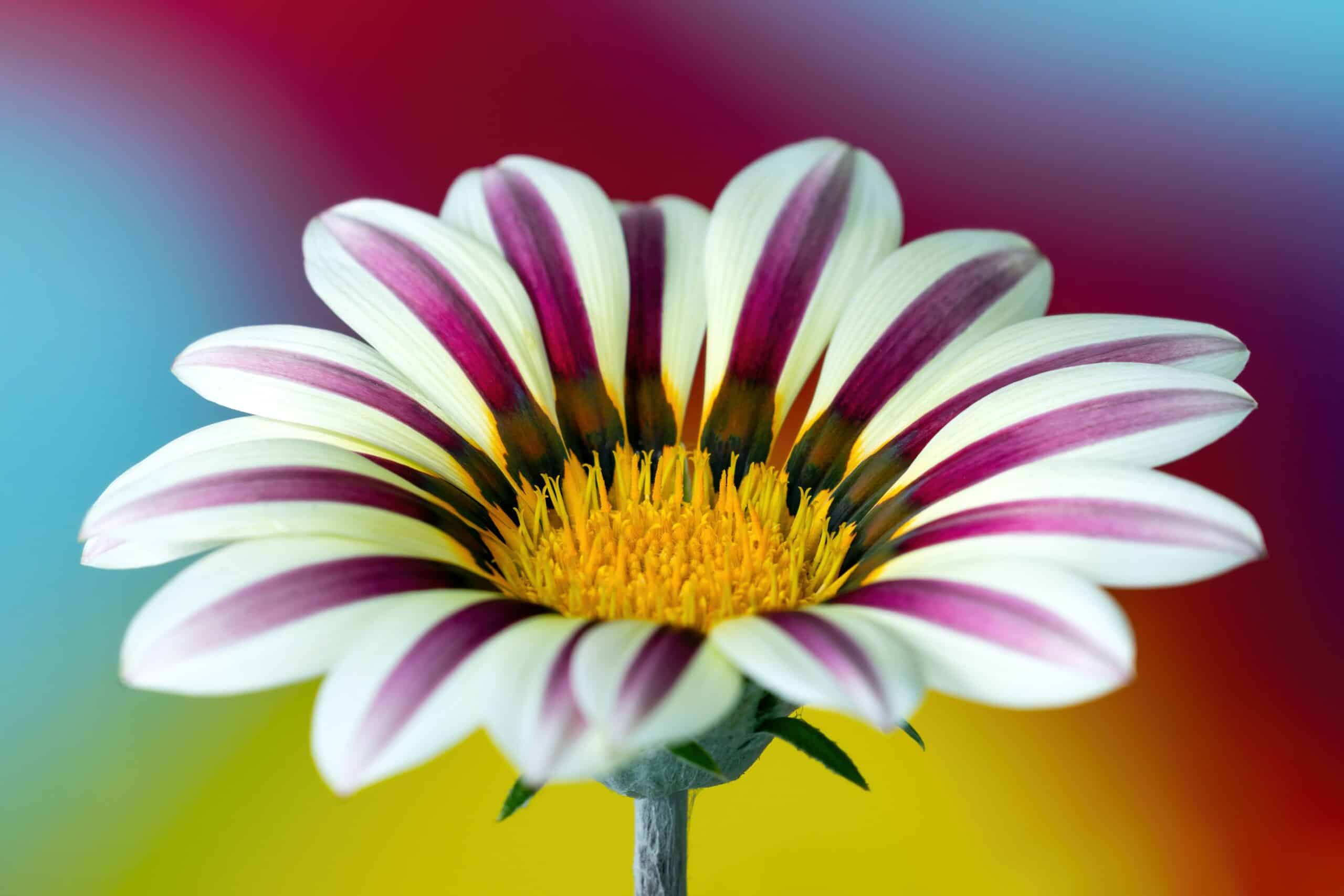The African Daisy is a popular flower known for its vibrant colors and captivating beauty. Perfect for adding a splash of color to any garden, the African Daisy is both easy to care for and fun to grow. With a few simple steps, you can have your own patch of dazzling daisies!
Delightful and delightful-smelling, the African Daisy is an attractive addition to any garden. From its unique petals to its vibrant colors, this flower’s beauty is sure to bring life and energy into any outdoor space. Plus, with its low maintenance requirements, growing these flowers is effortless!
With proper care and attention, these flowers are sure to thrive in any garden or flowerbed. So if you’re looking for an easy and beautiful way to add some charm to your outdoor space, then the African Daisy is the perfect choice! Read on learn more about how to grow and care for these lovely blooms.
Choose The Right Growing Conditions For African Daisy
When it comes to growing African Daisies, choosing the right conditions is key. These daisies thrive in sunny, warm climates and they need well-draining soil. To get the best growth results, you should provide six to eight hours of direct sun each day. When planting outdoors, make sure your chosen location allows for good air circulation and protection from strong winds. You also want to avoid overly moist soils; this can cause root rot and fungal diseases.
When it comes to watering, African Daises are fairly drought tolerant and do not require frequent watering when grown in outdoor gardens. During the summer months they should be watered once a week or when the soil becomes dry down at least one inch below the surface. In wintertime, you should reduce waterings to once every two weeks or when the top inch of soil is dry.
Now that you know what kind of conditions these daisies need for optimal growth, it’s time to plant them at the right time!
Plant African Daisy At The Right Time
Are you looking for a beautiful, cheerful flower to add to your garden? African daisies are perfect for brightening up your garden and adding a pop of color. Here are some tips to help you plant african daisy at the right time:
- Check the temperature – African daisies prefer temperatures between 40°F – 80°F and cannot survive in extreme weather conditions.
- Plant in spring or fall – African daisies are sensitive to heat, so it’s best to plant them in spring or fall when temperatures aren’t too hot or cold.
- Don’t overwater – African daisies don’t need much water and can easily be over-watered, which can lead to root rot and fungal disease.
- Fertilize regularly – Feeding African daisies fertilizer once every 2-3 weeks will help promote healthy growth and vibrant blooms throughout the growing season.
When planting African daisy, it’s important to pick the right place in your garden that has well-drained soil and plenty of sun exposure for the best results. Also, make sure there is enough space between each plant so they have room to grow without overcrowding other plants in the area. With these considerations taken into account, your African daisy plants should thrive!
Plant African Daisy In The Right Place
It’s easy to become overwhelmed with all the details of planting and caring for African daisy. What kind of soil should you use? When should you plant it? Where should you plant it? It can be hard to know where to start! Fortunately, with a few simple steps, you’ll have your African daisy thriving in no time.
Now that we’ve discussed when it’s best to plant an African daisy, let’s move on to where it should go. The ideal spot for an African daisy is one that has full sun or partial shade. This means 6-8 hours of direct sunlight each day, or at least 4 hours in a partially shaded area. If you can’t provide this much light, don’t worry – African daisies are quite adaptable and will still grow well in less than ideal conditions.
Choosing the right place for your African daisy is essential for its success. Once planted in the correct location, your flower will be well on its way to growing healthy and strong – but don’t forget about the soil! To ensure the best results, make sure you choose a potting mix that drains well and contains plenty of organic matter such as composted manure or leaf mold. With these steps taken care of, your African daisy will soon be blooming beautifully!
Plant African Daisy In The Right Soil
African daisies are incredibly popular plants, with over 500 species across the world. They can provide a splash of vibrant color to your garden or home, making them a great choice for any plant lover. To ensure that African daisies thrive, you must plant them in the right soil. Here’s what you need to know:
• Ensure that the soil is well-draining. African daisies require a dry environment; if the soil is too wet, their roots may rot and the flowers will not bloom. • Add organic matter such as compost or manure to improve drainage and aeration of the soil. • Add fertilizer to provide essential nutrients for strong growth and blooms. • Choose a location with plenty of sun; African daisies require at least 6 hours of direct sunlight per day in order to thrive.
By following these steps and taking care of your African daisy, you can ensure its health and beauty for years to come! With the right conditions in place, your plant will benefit from improved root health and abundant blooms that will add color and joy to your life. Now it’s time to move on to ensuring your African daisy is kept well watered.
Keep African Daisy Well Watered
When it comes to maintaining the beauty of African daisies, a few things come to mind: their bright and cheery petals, a vivid reminder of summer days. But in order for these perennial plants to thrive, one key factor should not be overlooked – watering.
Watering is essential for African daisies’ growth and wellbeing. During the early stages of development, make sure that the soil is properly moistened with water. It is also important to keep an eye on the amount of water once they are established, as too much or too little can affect their growth. For example, when temperatures rise during summer, provide extra water so that the soil remains moist.
In terms of frequency, make sure to check if the soil needs more water every other day or so. A good way to determine this is by sticking your finger into the dirt up to your first knuckle – if it feels dry then it’s time for another watering session! TIP: To avoid over-watering, use a garden hose with a gentle nozzle setting or try using soaker hoses around each plant bed which will help reduce evaporation loss from wind and sun exposure.
By providing ample water for African daisies, you can ensure their longevity and health throughout the growing season!
Fertilize African Daisy As Needed
It is often thought that fertilizing plants should be done without fail. While it is true that fertilizing helps to promote healthy growth and blooms, over-fertilizing can cause more harm than good. To ensure the health of African Daisy plants, the best course of action is to fertilize them as needed.
When determining if a plant needs fertilizer, one should look at the condition of its leaves and stems: if they are healthy and green with no discoloration, then the plant has enough nutrients and does not need to be fed. However, if the leaves are yellowing or wilting and not growing as quickly as before, then a fertilizer may be necessary. It is important to note that most African Daisies do not need much fertilizer since they are native to arid climates.
The best form of fertilizer for African Daisies is a balanced liquid fertilizer that contains equal parts nitrogen, phosphorus, and potassium. Applying this fertilizer every few weeks in small doses will help keep the soil lightly nourished without overwhelming the plant’s roots with too many nutrients at once. This can help ensure that your African Daisy stays healthy and blooms continually throughout the season.
Deadhead African Daisy For Continued Blooms
With spring in the air, it’s time to start thinking about how to get the most out of your African daisy plants. One way to do this is by deadheading, or removing old blooms from the plant. This process can seem tedious at first, but it will be well worth it in the end as you enjoy a steady stream of beautiful flowers throughout the summer season.
Deadheading African daisies is easy and straightforward. First, identify any spent blooms on your plant and use a pair of sharp scissors or pruning shears to snip them off. Make sure that you only remove the flower heads and not the foliage around them; doing so will help ensure that new buds have plenty of energy to form over time. Additionally, don’t hesitate to give your plants a light trim every few weeks if needed; this will keep them looking tidy and encourage healthy growth.
Once you begin deadheading regularly, you should begin to see an increase in flower production. Not only will this make your garden look more vibrant and full of life, but it can also be incredibly satisfying knowing that you put in the extra effort for such a beautiful result! So go ahead, break out those pruners – with some patience and dedication, you’ll soon reap the rewards of a thriving African daisy patch!
Prune African Daisy For Shape And Size
With a few simple pruning techniques, African Daisies can quickly be transformed from scraggly to shapely. It’s like giving an old acquaintance a makeover – and it’s just as satisfying! Pruning these plants is essential for keeping them healthy and well-groomed.
The best time to prune African Daisies is during the late spring or early summer. Start by cutting off any dead or damaged stems and foliage. Next, you can trim back any long stems to your desired size, being sure not to cut away too much of the plant at once. This will help promote fuller blooms in the future. Lastly, thin out any overcrowding by removing some stems close to the ground. This will ensure that each stem has plenty of room to grow and flourish.
When pruning African Daisies, it is important to remember that they are relatively fragile plants so take care not to damage them while trimming. An easy way to prevent this is by using sharp gardening shears or scissors and make sure that each cut is clean and angled downward towards the ground. With a little bit of patience, you’ll find your African Daisy looking neat and tidy in no time!
Control Pests And Diseases Of African Daisy
African daisies, with their bright colors and cheerful blooms, are a delightful addition to any garden. They may be small in size but they have the power to transform any outdoor space into something special. However, like all plants, these flowers require a certain level of care in order to thrive and stay healthy. Here’s what you need to know about controlling pests and diseases of African daisy:
Firstly, it is important to identify any potential pest or disease problem early on. Look for signs such as wilting leaves and discoloration that could indicate an infestation or infection. If you spot any warning signs, take immediate action by using natural pest repellents or fungicides.
Secondly, make sure your African daisy is planted in an area with good air circulation and plenty of sunlight. This will help prevent fungal diseases from taking hold, as well as deter pests from settling in too close to the plant. Additionally, provide adequate water and fertilizer throughout the growing season so that your African daisy can remain healthy and strong even during times of stress.
Finally, regular pruning is key when it comes to keeping pests at bay. Cut off any dead or diseased branches right away so that the plant can focus its energy on producing healthy new growth instead of fighting off an attack from unwanted visitors. By following these simple steps, you’ll be able to keep your African daisy looking vibrant and beautiful all year round! With a few preventative measures in place, you can ensure that your plants remain free from disease and pest problems for many seasons to come.
Dig And Divide African Daisy For Propagation
Digging and dividing African Daisy can be a great way to propagate your plants if done properly. It is essential to understand how to do this correctly in order to ensure that your plants are successful and healthy. By following these steps, you will be able to increase the number of African Daisies in your garden with ease.
To successfully divide African Daisy, consider these tips: • Make sure the soil is moist before starting. • Gently dig up the root ball of the plant, taking care not to damage it. • Cut through the root ball into several sections with a sharp knife or shears. • Replant each section into its own pot or container filled with well-draining soil. • Water regularly and keep them in an area with good air circulation.
By following these steps, you can easily increase the number of African Daisies in your garden without having to buy new plants every time! Plus, it can be a fun activity for you and your family and friends as everyone takes part in caring for their own section of the plant. This hands-on approach can also help teach children about gardening basics while still being enjoyable for all involved.
When propagating by division, it’s important to choose a pot or container that has enough room for each section of the root ball. This will allow them plenty of space for growth so they can flourish in their new environment and provide stunning blooms!
Choose The Right Container For Growing African Daisy
Once you’ve decided to propagate African daisy, the next step is to choose the right container. After all, the success of your plants depends on it!
When selecting a container for your African daisy, opt for one that’s slightly larger than its current size. That way, there’s room for the roots to expand and take in more nutrients and water. A pot with drainage holes is also ideal as this helps prevent root rot. If you want to go the extra mile, use a lightweight container like plastic or terracotta that keeps soil temperature constant and prevents it from drying out quickly.
And don’t forget about location! Place your African daisy in an area that gets six or more hours of sun each day – these plants love basking in the sunshine! You can also move them around if needed, as long as they get their daily dose of sun.
Now that you’ve got the right container for your African daisies, the next step is planting them inside!
Plant African Daisy In Containers
Planting African daisies in containers is like setting off on a journey. It requires careful consideration and planning beforehand, to make sure that it’s successful and the beautiful flowers are able to thrive. Like any trip, you need to know what type of vessel you’re taking with you – in this case, containers – and plan accordingly.
When choosing the right container for your daisy plants, consider how much room they need to spread out their roots. You’ll want something deep enough so that the plant can grow without being restricted, but not too wide or shallow as this could lead to drying out or waterlogging. Also, think about drainage holes – make sure these are present so that excess water can escape.
Once you have a suitable vessel for your African daisy plants, it’s time to get planting! Prepare your soil by blending compost with regular potting soil in equal parts and then fill the container up with this mixture until it’s two-thirds full. Place one or two seeds into each pot (depending on size) and cover them with a thin layer of soil before watering thoroughly. With some patience and care, you’ll soon have a vibrant display of African daisies in no time!
Care For African Daisy In Containers
Caring for African Daisy in containers is as easy as a Sunday morning! After you have planted them, the real work begins. With some simple steps and regular maintenance, your African Daisies will thrive and bring life to your outdoor space.
The most important step in caring for these gorgeous flowers is providing adequate water. Because they are container plants, they will need more frequent watering compared to those planted directly in the ground. Make sure you check the soil every couple of days and if it feels dry—give them a drink! Additionally, adding mulch around the base can help lock in moisture and reduce evaporation from the sun’s rays.
When it comes to feeding your African Daisies, use a balanced fertilizer such as 10-10-10 or 8-8-8 once every two weeks during their growing season. This will give them the nutrients they need to blossom into beautiful blooms that last until fall. It’s also important to trim away any dead or discolored leaves and flowers throughout the season since these can prevent new blossoms from appearing.
With just a bit of TLC you’ll find yourself surrounded by magnificent African Daisies that need little care but bring lots of joy! Now let’s move on to how you can ensure your plants survive through winter…
Overwinter African Daisy In Containers
African daisies are a popular bloomer, and many gardeners want to keep them through winter. While they typically prefer warm climates, they can be overwintered in containers with the right care. For example, Annie’s African Daisy has been overwintered successfully for several years in her balcony container. To give your own African daisy the best chance of surviving the winter, here’s what you need to do:
Prepare for Winter: • Move container into a sheltered area where temperatures stay above freezing • Stop regular watering • Gently remove any dead leaves or spent blooms • Add extra soil or compost around the base of the plant • Cover the pot with bubble wrap or burlap and secure with rope or ties
Care Through Winter: • Check on it monthly by watering lightly as needed if soil is dry • Monitor for signs of pests or disease and treat accordingly • Prune back in early spring if necessary • In late winter/spring move back out into full sun and resume regular watering
With the right preparation and care, your African daisy can survive the colder months and come back strong in Spring. As you prepare your potted African daisy for Winter weather, consider also how to overwinter it in the ground.
Overwinter African Daisy In The Ground
Have you ever wondered what it would take to successfully overwinter an African Daisy? It’s not as hard as you might think! In this article, we’ll explore how to overwinter African daisies in the ground.
First, let’s start with the basics. An African Daisy is a type of low-growing perennial that’s native to South Africa and other parts of Africa. It requires well-draining soil and plenty of sunlight for successful growth. So, when overwintering your African daisy in the ground, make sure that you have a spot that gets at least 6 hours of direct sun during the day.
To prepare your African daisy for winter, choose a location where it can get some shelter from strong winds and heavy rains. Make sure the soil is well-draining, too; otherwise, your plant may suffer from root rot. Additionally, if your area experiences temperatures below freezing during winter months, mulch around your plant to provide extra insulation against cold weather conditions.
Once your plant has been properly prepared for winter weather conditions, all that’s left is to sit back and enjoy watching its beauty unfold throughout the season! With just a few simple steps, you can ensure that your African Daisy will remain healthy and happy throughout the colder months of the year.
Frequently Asked Questions
How Often Should I Fertilize African Daisy?
Fertilizing African daisies is a key component of their care. Regular fertilization helps the flowers flourish and grow with vivid color and vigor. While it’s important to fertilize your daisies, it’s just as important to know when to do it.
The best time for fertilizing African daisies is when they’re actively growing in the spring and summer months. During this period, you should feed the plants every two to four weeks using a balanced fertilizer such as 10-10-10 or 20-20-20. You can also use liquid or granular fertilizer depending on what’s most convenient for you.
When autumn arrives, back off on how often you feed your daisies. You can reduce the frequency of fertilizer applications to once per month if needed and then stop completely in winter when the plant is dormant. That said, if you live in an area where temperatures remain mild during winter (above freezing), you can continue fertilizing your African daisies during this time as well. Keeping them fertilized will help ensure that they thrive come springtime.
By following these guidelines, you can provide your African daisies with the nutrition they need to remain healthy and vibrant throughout all seasons!
Are African Daisies Easy To Grow?
Are African Daisies easy to grow? Absolutely! With their vibrant, cheerful flowers and hardy nature, they are a great choice for gardens of all sizes. Plus, they require minimal effort and care to keep them thriving.
If you’re looking for an easy-care flower that will bring bright beauty to your garden, African Daisies should be at the top of your list. They come in a variety of colors including pink, white, yellow and even bicolor varieties. You don’t need a lot of space either – these plants can easily be grown in containers or small garden beds.
When it comes to care, African Daisies are pretty low maintenance. They prefer full sun but will tolerate some shade and do best with regular water during the summer months. Fertilize once or twice a year and trim back after flowering to encourage new growth. That’s really all there is to it!
African Daisies provide an effortless way to add color and texture to any outdoor area – just plant them and let nature do the rest! They’re also drought tolerant once established so you don’t have to worry about watering them every day. All these factors make this an especially attractive choice for beginner gardeners who want beautiful blooms without too much fuss.
What Is The Best Soil Type For African Daisy?
Soil type is an important factor when it comes to growing African daisies. Different types of soil can make a big difference in whether your flowers thrive or struggle. So, if you’re looking for the best soil for these beauties, here’s what you need to know:
African daisies prefer soils that are well-draining and nutrient rich.
Good drainage helps keep the roots from becoming waterlogged and helps prevent diseases that can harm your plants.
Nutrients provide all the minerals and vitamins they need to be healthy and strong.
The ideal soil pH for African daisies is between 6.0 and 7.0, which is slightly acidic to neutral.
You can test your soil with a home kit or take a sample to your local garden center to have them do it for you.
If needed, you can adjust the pH by adding lime or sulfur to balance out the acidity levels.
To ensure your African daisies get off to a great start, prepare the soil before planting them in it. Add organic matter like compost or peat moss and work it into the area so that it is mixed well into the existing soil. This will provide more nutrients and help improve drainage, giving your flowers everything they need for healthy growth!
How Do I Propagate African Daisy?
Propagating African Daisy is like taking a soft breath of summer air – it’s easy and simple, but with proper care and attention, the results can be dazzling. To make sure that your efforts are rewarded, there are a few key steps you should follow.
First off, you’ll want to choose a stem that has at least two sets of healthy leaves. Cut just below one set of leaves, making sure to leave at least one inch of stem below the cut. The cutting will then go into moist soil, preferably a potting mix specifically designed for African Daisies. If you have access to sand or perlite mixed in with the potting mix, this will help provide better drainage for the plant. Place the cutting in an area where it will get indirect sunlight and keep the soil moist but not soggy.
In order to ensure successful propagation, it’s important to keep an eye on your African Daisy cuttings while they root and grow new plants. To do this, use a spray bottle filled with water to mist the soil regularly – once or twice per day should suffice. You may also want to set up some kind of humidity dome over your cuttings if you live in a dry climate as this will help keep moisture levels high enough for successful rooting. After several weeks, your African Daisy cuttings should have rooted fully and be ready to transplant into larger pots or even outside into their permanent home!
With a little tender loving care and attention, you can easily propagate African Daisies from stem cuttings – just remember to choose healthy stems and provide adequate moisture throughout the process! With patience and dedication, soon enough you’ll have beautiful blooms that add color and life to any garden space.
How Long Will African Daisy Blooms Last?
The ever-blooming African Daisy is a sight to behold, its vibrant petals making it the perfect addition to any garden. But how long do these delights last? We’ve got the answers you need to know.
Revel in the beauty of the African Daisy’s blooms for up to eight weeks! With proper care, they can flower from spring right through summer and into fall. It’s easy enough to ensure your African Daisies keep putting on their show – all it takes is regular watering and occasional trimming of spent flowers.
To get the best out of your daisy patch, choose a sunny spot with well-drained soil and make sure that each plant has plenty of room to spread its wings – at least 12 inches between each one. With these simple steps, you’ll be able to enjoy the blooms of your African Daisies for months to come. Keep them looking their best and you won’t have time to miss a single petal!
Conclusion
In conclusion, African Daisies are beautiful and easy to care for, making them a great addition to any garden. With a little bit of knowledge and proper care, these daisies will provide a bright touch of color for years to come. By following the tips outlined in this article, you can ensure that your African Daisy plants will thrive and produce blooms that last for weeks on end.
Just like the famous phrase from the classic novel, Alice’s Adventures in Wonderland by Lewis Carroll “If you don’t know where you’re going, any road will get you there” applies here as well – if you don’t know how to care for your African Daisy, then at least take the time to learn about it before starting. Following the step-by-step instructions in this article can help make sure your daisy is healthy and happy.
Finally, with proper care and attention, African Daisies can be a source of beauty and vibrant life in your garden. With just a bit of effort on your part they can truly be an oasis of beauty in your outdoor space that both you and others can enjoy year-round.





























